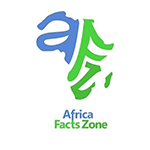Ranking the Top 10 African Countries with the Highest Modern Day Slavery Rates

In the 21st century, the term “modern day slavery” may evoke images of a bygone era, but the harsh reality is that slavery still exists in various forms across the globe, including in Africa.
Despite significant progress in many areas, modern-day slavery continues to persist, casting a shadow over efforts to promote and protect human rights.
Forms of Modern Day Slavery
Modern day slavery encompasses a range of forms, as identified by Walk Free, an international human rights group dedicated to ending modern slavery.
These forms include forced labor, forced or servile marriage, debt bondage, forced commercial sexual exploitation, human trafficking, slavery-like practices, and the sale and exploitation of children.
Modern Day Slavery In Africa
In Africa, modern slavery manifests in diverse contexts. Examples include domestic servitude, particularly affecting young girls, and forced labor in industries such as mining, agriculture, and fishing.
These practices not only violate basic human rights but also hinder social and economic development in affected regions.
Also Read: The Slave Trade in Africa: The Atlantic Slave Trade
Challenges and Contributing Factors
The persistence of modern day slavery in Africa is exacerbated by systemic challenges in governance and law enforcement.
Weak legal frameworks, corruption, and insufficient resources hinder efforts to eradicate slavery effectively.
Additionally, factors such as poverty, lack of education, and social inequality contribute to the vulnerability of individuals to exploitation.
Global Estimates and the Global Slavery Index
According to the latest Global Estimates of Modern Slavery, approximately 50 million people worldwide are considered modern-day slaves.
These estimates, compiled by the International Labour Organization (ILO), Walk Free, and the International Organization for Migration (IOM), form the basis for Walk Free’s Global Slavery Index (GSI).
The GSI provides national estimates of modern slavery for 160 countries, enabling comparisons between countries and regions.
Also Read: The Afrocomb Black Hair Slavery and Slave Trade in Africa
Top 10 African Countries with the Highest Prevalence of Modern Day Slavery
- Eritrea – 90.3
- Mauritania – 32.0
- South Sudan – 10.3
- Republic of Congo – 8.0
- Equatorial Guinea – 7.8
- Nigeria – 7.8
- Gabon – 7.6
- Burundi – 7.5
- Côte d’Ivoire – 7.3
- Djibouti – 7.1
Methodology for Prevalence Rate
The prevalence rates for modern day slavery were calculated using individual and country-level risk factors, based on interviews with survivors of modern slavery and assessments of national-level vulnerability.
These rates highlight the scale of modern slavery in each country and underscore the urgent need for action to combat this pervasive issue.
Conclusion
While significant progress has been made in raising awareness about modern-day slavery, much more needs to be done to eradicate this heinous practice.
Addressing the root causes of slavery, such as poverty and lack of education, and strengthening governance and law enforcement mechanisms are crucial steps towards ending modern slavery in Africa and around the world.





